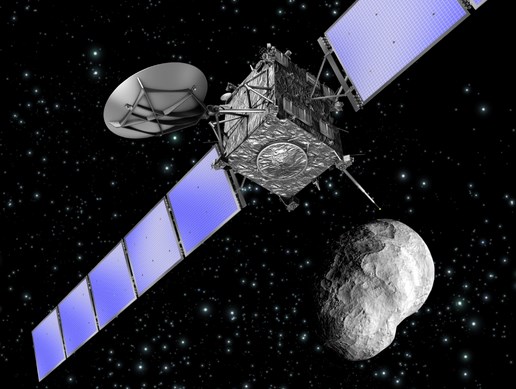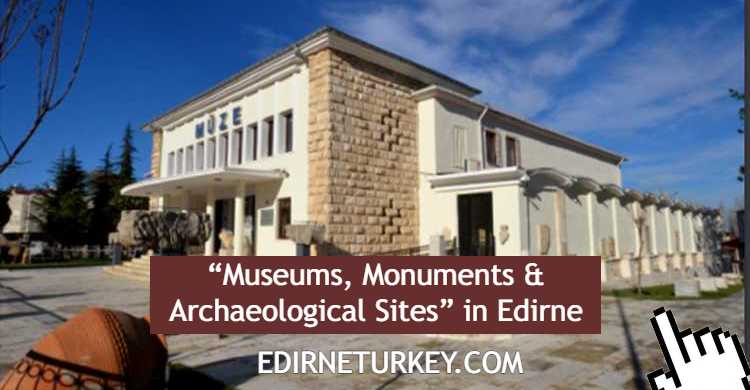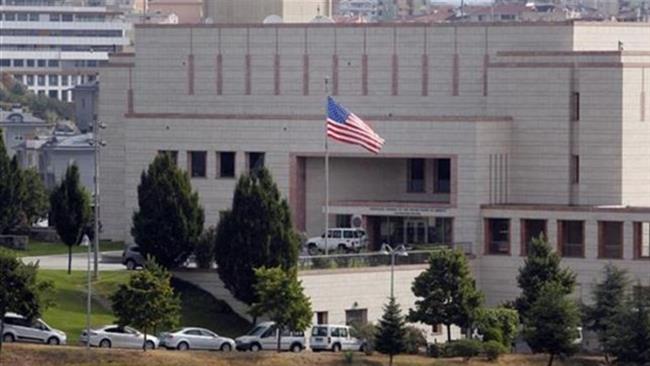What makes the Rosetta mission so special?
 Down below you can find a very important piece of information about Rosetta and its mission.. You will be able to find yourself in the total picture and grasp the importance of science in the future (and today) of human kind:
Down below you can find a very important piece of information about Rosetta and its mission.. You will be able to find yourself in the total picture and grasp the importance of science in the future (and today) of human kind:
Why is the mission called Rosetta?
The mission is named after the Rosetta Stone, a slab of volcanic basalt found near the Egyptian town of Rashid (Rosetta) in 1799. The stone revolutionised our understanding of the past. By comparing the three carved inscriptions on the stone (written in two forms of Egyptian and Greek), historians were able to decipher the mysterious hieroglyphics – the written language of ancient Egypt. As a result of this breakthrough, scholars were able to piece together the history of a lost culture.
The Rosetta Stone provided the key to an ancient civilisation. ESA’s Rosetta mission will allow scientists to unlock the mysteries of the oldest building blocks of our Solar System: comets.
When was the mission approved?
The Rosetta Mission was approved as a Cornerstone Mission in ESA’s first long-term science programme (Horizon 2000) in November 1993.
What are the mission’s objectives?
Rosetta’s prime objective is to help understand the origin and evolution of the Solar System. The comet’s composition reflects the composition of the pre-solar nebula out of which the Sun and the planets of the Solar System formed, more than 4.6 billion years ago. Therefore, an in-depth analysis of comet 67P/Churyumov-Gerasimenko by Rosetta and its lander will provide essential information to understand how the Solar System formed.
There is convincing evidence that comets played a key role in the evolution of the planets, because cometary impacts are known to have been much more common in the early Solar System than today. Comets, for example, probably brought much of the water in today’s oceans. They could even have provided the complex organic molecules that may have played a crucial role in the evolution of life on Earth.
What makes the Rosetta mission so special?
Rosetta will be undertaking several ‘firsts’ in space exploration. It will be the first mission to orbit and land on a comet. That makes Rosetta one of the most complex and ambitious missions ever undertaken. Scientists had to plan in advance, in the greatest possible detail, a ten year trip through the Solar System. Approaching, orbiting, and landing on a comet require delicate and spectacular manoeuvres. The comet, 67P/Churyumov-Gerasimenko, is a relatively small object, about 4 kilometres in diameter, moving at a speed as great as 135,000 kilometres per hour. We know very little about its actual surface properties – only when we get there will we be able to explore the surface in such detail that we can choose a safe landing scenario. Rosetta is very special because of the unique science it will perform. No other previous mission has had Rosetta’s potential to look back to the infant Solar System and investigate the role comets may have played in the beginnings of life on Earth.
Rosetta will be the first spacecraft to witness, at close proximity, how a comet changes as it approaches the increasing intensity of the Sun’s radiation. The comet develops the so-called ‘coma’ (essentially the comet’s atmosphere) and the two characteristic ion and dust tails. Rosetta’s lander will obtain the first images from a comet’s surface and make the first in-situ subsurface analysis of its composition.
It will also be the first mission to investigate a comet’s nucleus and environment over an extended period of time.
How did Rosetta reach comet 67P/Churyumov-Gerasimenko, and how long did it take?
Comet 67P/Churyumov-Gerasimenko loops around the Sun between the orbits of Jupiter and Earth, that is, between about 800 million and 186 million kilometres from the Sun. But rendezvousing with the comet required travelling a cumulative distance of over 6.4 billion kilometres. As no launcher was capable of directly injecting Rosetta into such an orbit, gravity assists were needed from four planetary flybys – one of Mars (2007) and three of Earth (2005, 2007 and 2009) – a long circuitous trip that took ten years to complete.
Why is it so important to study comets?
Comets are of great interest to scientists because, to our knowledge, they are the oldest, most primitive bodies in the Solar System, preserving the earliest record of material from the nebula out of which our Sun and planets were formed. Planets have gone through chemical transformations, but comets have remained almost unchanged. Furthermore, comets brought ‘volatile’ light elements to the planets and likely played an important role in forming oceans and atmospheres. Comets also carry complex organic molecules that may have been involved in the origin of life on Earth.
What do we presently know about how the Solar System formed?
The Solar System formed about 5 billion years ago when a cloud of gas and dust – called the ‘pre-solar nebula’ – started to collapse due to gravitational forces. A disc of leftover material made of the same gas and dust present in the primordial cloud formed around the still-forming Sun. After the Sun ‘ignited’ and began its life as star, most of the particles in this disc collided and stuck to one another, growing in size until they became the planets and the other Solar System bodies.
However, it took some time before the Solar System became the way it is now. About 4.5 billion years ago, it was still ‘under construction’, and interplanetary space was littered with conglomerates of dust particles. Many of these chunks hit the planets and were destroyed in the collision, but thousands of millions of them survived – they are the asteroids and comets we know today.
SOURCE: http://www.esa.int/





